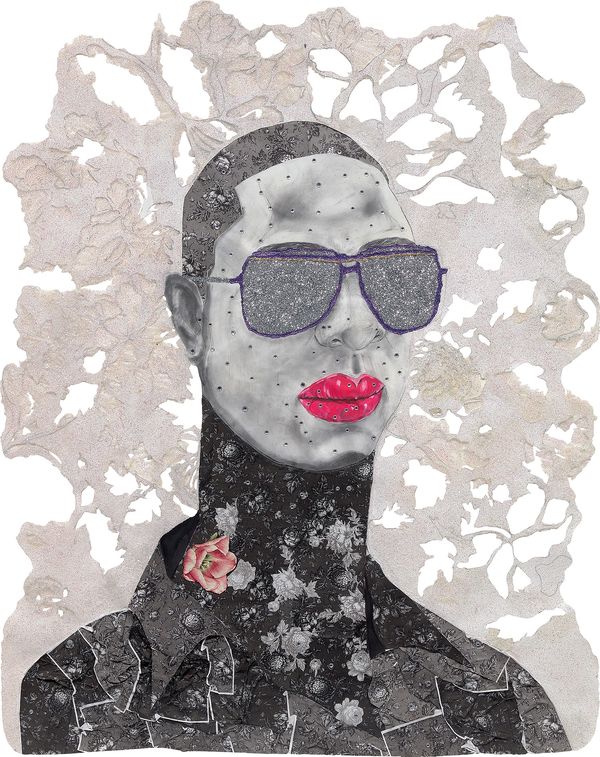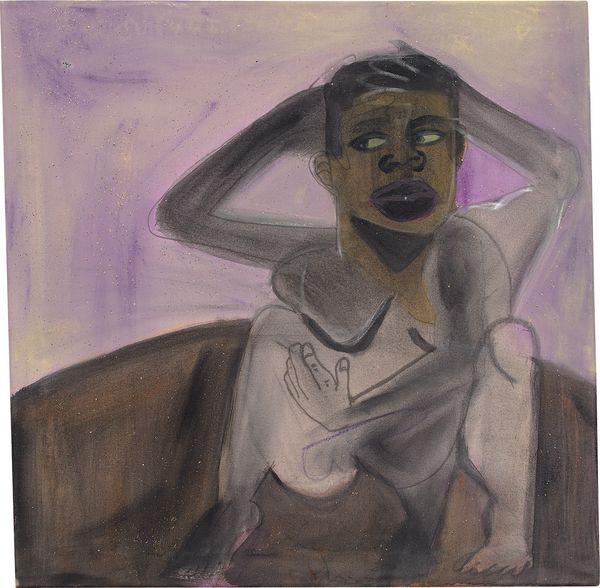Ebony G. Patterson Untitled Species I, 2010-2011. Estimate: $15,000-20,000.
New Now at Phillips New York, 4 March.
Artists Ebony G. Patterson and Jonathan Lyndon Chase directly address their personal histories and manifest the complex matters of race, gender, sexuality and class in their respective practices. Their work encourages viewers to confront their preconceptions and the ways in which subjective social constructs affect the way we live. By initiating this introspection, Patterson and Chase contribute a new narrative to the contemporary discourse and inspire their viewers to do the same. While Patterson showcases the transformation of the body and gender by exploring Jamaican dancehall culture in her series Species, 2010–2011, Chase tackles his personal struggle to accept his identity as a queer black man in America in works such as Untitled, 2016.
Jonathan Lyndon Chase Untitled, 2016. Estimate: $10,000-15,000.
Blending various materials such as glitter, sequins, fabrics, beads, faux flowers and jewelry, Patterson confronts the socially constructed notions of identity by manifesting its inherently multivalent composition. While Patterson’s figures are elaborately embellished, Chase’s are undecorated and confrontational. Chase explores the ways by which traditional notions of masculinity can be challenged and overturned. His subjects are black queer men that incorporate a compositional fantasy informed by his own life experiences involving pornography, books, social media, and dreams. The multi-limbed figure in Untitled squats square to the viewer but looking askance—demanding to be recognized while refusing to present a defnitive reading. Similarly, Patterson’s Untitled Species I presents a glitter-encrusted Jamaican male portrait, investigating the ways in which young black men shape their identity within a particular culture. The artist boldly references skin bleaching, a century-spanning fashion trend in Jamaica. Not only does Patterson present the figure with bleached skin, but she also addresses antiquated ideas of gender norms with her use of feminine-associated adornments such as rhinestones, red-painted lips, floral embellishments and the general beauty of her sitter.
By investigating shifting and contradictory gender and race roles as well as contemporary notions of fashion and beauty, Chase’s and Patterson’s portraits challenge the viewer to reconsider the underlying systems that have been internalized as “established norms” by society for too long.

